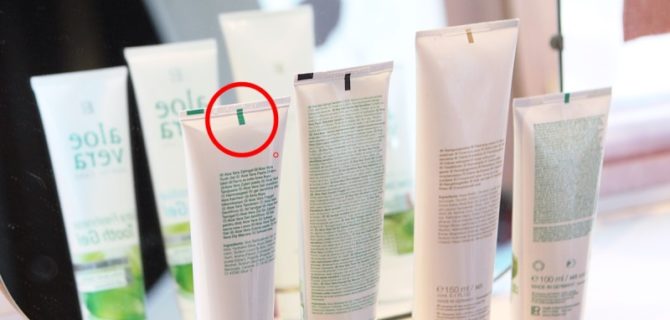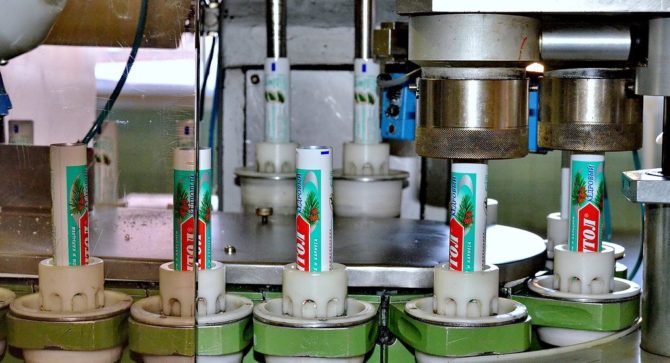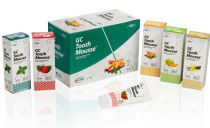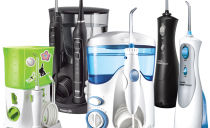What do the colored stripes on the tubes of toothpastes and creams mean?
There are so many myths about what the colored stripes on the tubes of toothpastes mean. Allegedly, they talk about harmful substances, about the permitted frequency of use of the paste and about in which country or city it was actually made. The most advanced manufacturers began to produce toothpastes in tubes with a green stripe, supporting the myth of their naturalness. But in fact, such assumptions are erroneous, and any dentist can confirm this.
Content
Basic myths about color marks on tubes
According to some consumers, the colors of the strips on the tubes of toothpastes, ointments and creams indicate the features of their composition:
- Red is about synthetic.
- Green is about environmental.
- Blue and brown - that the product is half natural.
- Black is about the content of only chemical components.
Another part of consumers is of the opinion that colored markers indicate the degree of abrasion, the presence of protective properties or the cost of hygiene products.
| Color strips on a tube of paste | The number of abrasive particles | Protective properties | Cost |
|---|---|---|---|
| Red | Few | Although it contains synthetic components, it provides the necessary degree of enamel protection. | Expensive remedy |
| Green | Not | Effectively protects teeth and oral cavity from diseases due to ecological composition | average cost |
| Blue, black, brown | Lot | It has a low degree of protection, provokes periodontal disease | Cheap tool |
GOST and multi-colored stripes
A modern tube of toothpaste made in Russia must immediately meet three GOSTs:
- GOST 7983-99 (based on ISO 11609-95) talks about the correct labeling of pasty mass and what it means.
- GOST 14192 and 28303 denotes packaging requirements.
These documents state that:
- It is necessary to indicate on the tube:
- Product name;
- brand;
- trademark;
- volume;
- composition;
- permissible storage conditions;
- shelf life;
- availability of relevant certificates.
- Marking is done in the language of the manufacturer and the importing country.
- Permissible deviations from the mass are 5%.
- Container materials must be environmentally friendly.
But not one of the GOSTs says the meaning of colored stripes on toothpaste and the rules for their application. I.e the state does not regulate the application of the “color bar code”, the company itself solves the issue of marking toothpaste with colored stripes and can do without these designations.
Why are colorful stripes applied?
In fact colored stripes on the tubes are the identification mark for the conveyor during automated production. They are necessary for the high-quality separation of the tube blank from the conveyor belt.
Pasta strips
The technology sensor detects color coding and cuts off a future tube of toothpaste. After that, the plastic sheet is twisted, glued and filled with gel contents. After these manipulations, the tube is finally glued and closed with a cap.
The color of the label on the toothpaste, by and large, does not mean anything. The manufacturer can independently choose the range and height of the strips, regardless of the chemical composition of the product and the shape of the container.
Stripes on creams
Creams are marked during the movement of the workpieces along the conveyor belt in a non-contact manner using special color labels read by conveyor sensors. They allow not only to correctly cut and solder the tube, but also indicate the place for drawing drawings and text on the container.
Placement of information on the composition and manufacturer is applied by ink jet method using special ink. That is, red, black and other strips are needed only in the production process of creams using robotic technology.
The true meaning of colors
Despite a simple explanation for the appearance of strips on the tubes of toothpaste, a certain color is chosen for them for a reason. The choice of label shade is affected by:
- Tube color. A black (dark) strip on the toothpaste means that the main tone of the workpiece and tube has a white or just a light shade. Light tags are typical for containers of a dark color, but manufacturers who decide to choose such a shade of the marker are at risk, since the photo sensor may not “catch” it during the soldering process.
- Limited choice. Typically, 4 basic shades are involved in the marking (CMYK - Cyan Magenta Yellow Black). Additionally, the fifth color can be used to print a barcode, text, one light tag.
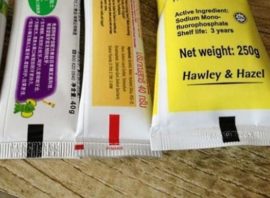 That is, the correct reading of the markings with an optical sensor depends on the contrast of the strip and the primary color of the tube. Most often, the labels are darker than the background, which allows sensors to read the necessary information most efficiently.
That is, the correct reading of the markings with an optical sensor depends on the contrast of the strip and the primary color of the tube. Most often, the labels are darker than the background, which allows sensors to read the necessary information most efficiently.
No less important when choosing a marker shade is the packaging design. This means that if there are blue elements on the tube of toothpaste, then the strip on it will be blue. Since the strips on the tubes of creams and pastes do not mean anything important (impact on the enamel), they can very well be replaced by other designer elements by the decision of the manufacturer.
Technological tags can be divided into 2 types based on their position on the sheet:
- horizontal markers are placed for precise cutting of the main workpiece when printing on a roll of laminate;
- vertical marks are needed to accurately indicate the place of incision when welding the tube, so that it is parallel to the main text and the image on the final product.
Labeling Procedure
Color separation depends on the equipment and the number of staining sections. At the preparatory stage, one single primary color is taken, which will most contrast with the color of the tube. Based on it, the features of reading elements and printing a bar code are determined.
If you use two colors at once, for example, blue and black, then this will lead to unreadable text when the equipment is shifted. Optical sensors correctly detect any one primary color (red, green). Most often, it is white that is used for the background, since all colored stripes are clearly visible on white tubes, the values of the height and width of the marks are discussed individually. This approach allows you to minimize the cost of production and placement of information on tubes printed non-contact method.
But the color of the marking has nothing to do with the composition of the gel. Typically, a tube is made by a company that has nothing to do with the development of the personal care product itself and dentistry, so its labels simply cannot, by definition, relate to the chemical composition of the paste. If the strips on the toothpaste mean something, then this clearly does not matter to the end user.
Depending on the required parameters of the tube, a large blank sheet is divided into parts of a certain size. As delimiters and put light labels. They indicate the incision site for the production of the tube of the desired volume. Different colors of the markers help to identify manufacturing defects and other technological defects.
The strips on the toothpaste do not indicate anything, so you do not need to look at them and look for a secret sign in them.If you need to choose a paste with some specific indicators, you need to look for information about them not in stripes. The content of synthetic and natural substances in the gel can be found by reading the composition information posted on the tube.

